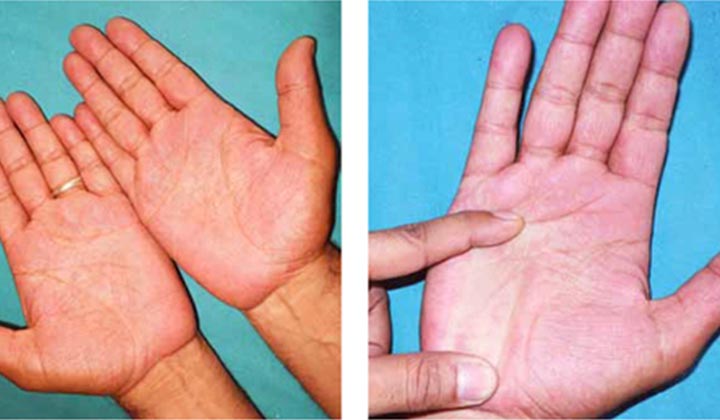Erythromelalgia is a rare disorder that can affect your feet, hands and other areas. Symptoms may come and go. They include skin redness and an intense burning sensation. This can make sleeping, walking and other tasks challenging. Medications may help symptom flares.
Advertisement
Cleveland Clinic is a non-profit academic medical center. Advertising on our site helps support our mission. We do not endorse non-Cleveland Clinic products or services. Policy

Erythromelalgia (ur-i-thruh-muh-lal-jah) is a rare condition in which excess blood flow causes periodic symptom flares. It’s a chronic condition, meaning that it stays with you for life. Erythromelalgia symptoms, which often include burning pain, worsen over time.
Advertisement
Cleveland Clinic is a non-profit academic medical center. Advertising on our site helps support our mission. We do not endorse non-Cleveland Clinic products or services. Policy
Erythromelalgia typically affects your feet but can also occur on your:
There are several types, including:
Primary erythromelalgia is isolated and not due to an underlying disease.
Secondary erythromelalgia occurs when there is an underlying blood, neurological or immunologic condition. These include:
The three primary erythromelalgia symptoms are:
Symptoms may also include:
Symptoms may occur on one or both sides of your body. They can range from mild to intense. Some people experience their first flare in childhood, while others aren’t affected until adulthood.
Advertisement
Flares usually occur when you experience a sudden increase in body temperature. This may happen when you are:
There’s no specific test for diagnosing erythromelalgia. Your healthcare provider reviews your symptoms and examines any active flare-ups or photos of flare-ups. Multiple tests may be necessary to confirm your symptoms and rule out other medical issues. These include:
It may be tempting to soak the affected area in ice water, but ice baths can make erythromelalgia symptoms worse. It can also put you at risk for skin issues like nonhealing wounds and necrosis that are difficult to treat.
The treatment that’s right for you depends on the cause. For secondary erythromelalgia, treating the underlying issue may relieve your symptoms. Treatment for primary erythromelalgia includes medications.
Erythromelalgia treatment often includes drugs you take by mouth. Many of these drugs are for other medical conditions. But they can be effective in relieving erythromelalgia symptoms.
They include:
Erythromelalgia treatment may also include:
Nonmedical therapies include:
Symptom flares can affect your quality of life, but they are rarely fatal. Most people live well into older adulthood. They have jobs, travel, enjoy hobbies and more. Sometimes erythromelalgia treatment is not successful, making it difficult to go about your daily routine.
There isn’t much you can do to prevent erythromelalgia. If you have a family history of the disease, genetic testing can uncover the likelihood of passing it on to a fetus.
Advertisement
People who have the disease say that symptom flares can feel like:
There are many steps you can take to feel your best and ease discomfort. These include:
Many people feel isolated and not understood by their family members or healthcare providers. Online erythromelalgia support groups enable you to connect with people who are going through similar challenges. Learning from the experiences of others can help you feel less alone.
Advertisement
Erythromelalgia is a rare condition that causes episodes of pain and burning skin. There are many treatment options, and they typically include medications. Sometimes medications aren’t enough to quiet symptom flares, making it difficult to go about your daily routine. Even with these setbacks, many people live long, rewarding lives.
Advertisement
Cleveland Clinic’s primary care providers offer lifelong medical care. From sinus infections and high blood pressure to preventive screening, we’re here for you.

Last reviewed on 04/18/2022.
Learn more about the Health Library and our editorial process.